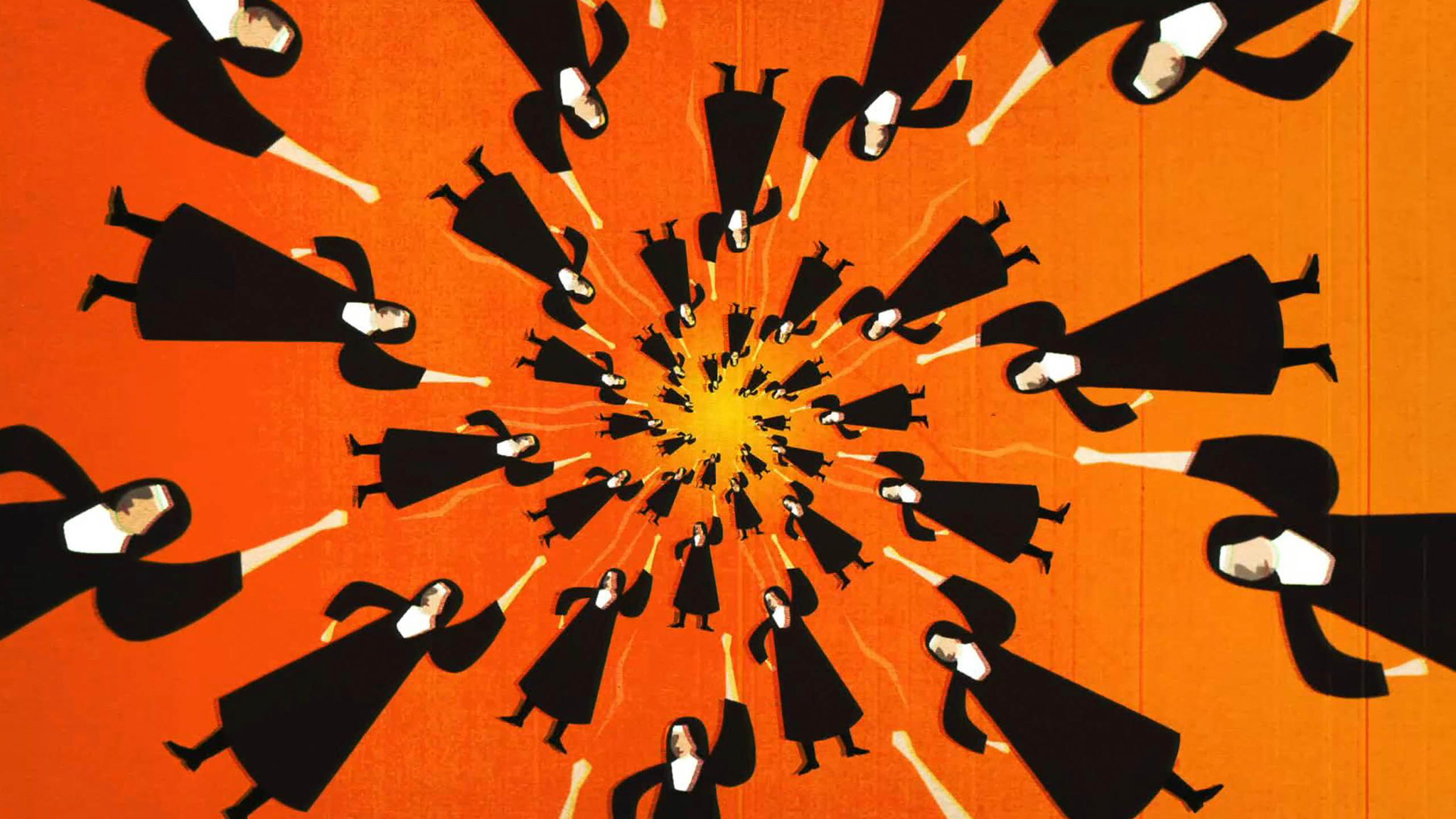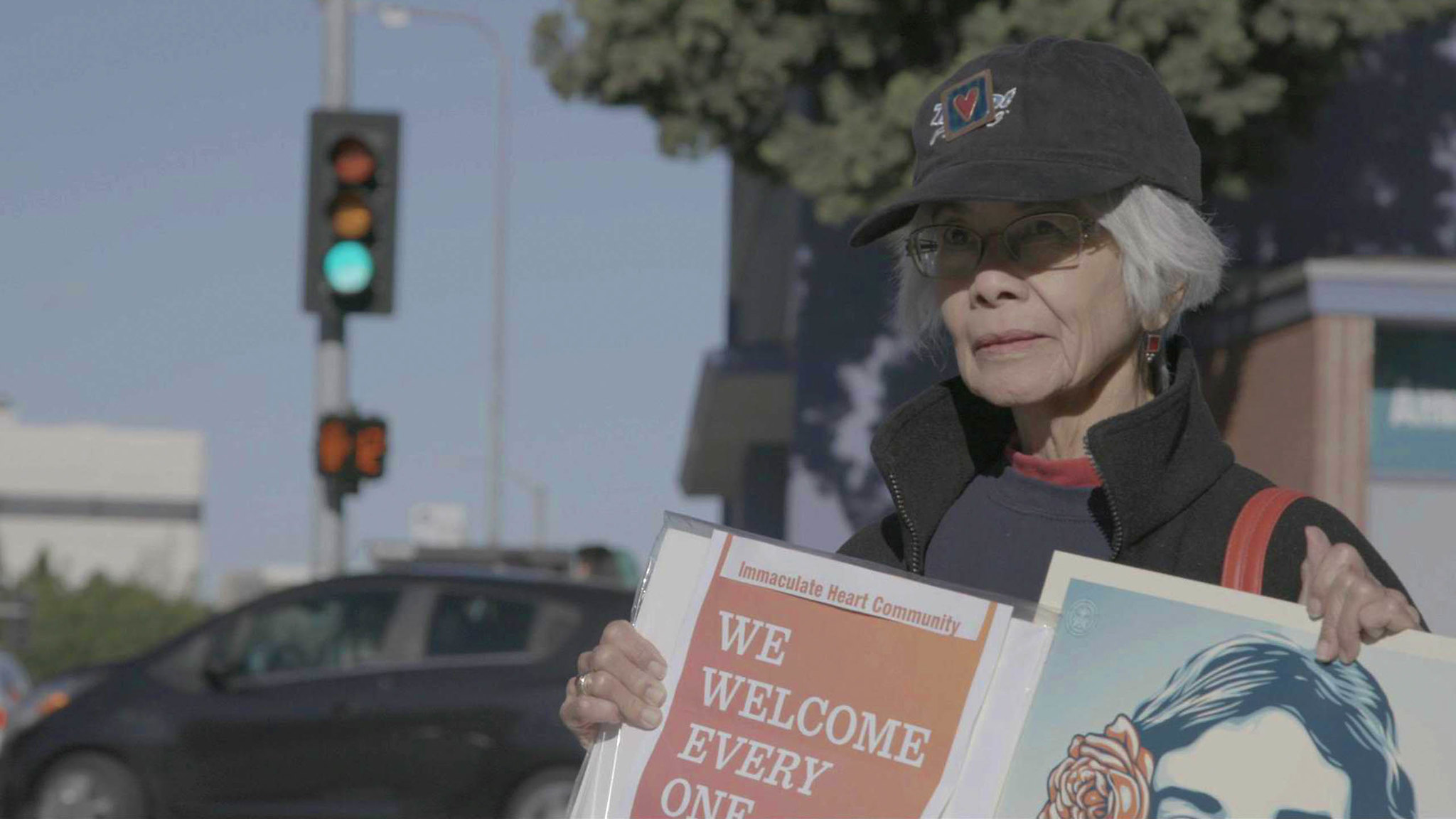Pedro Kos documents the history of the independent Sisters of the Immaculate Heart of Mary in Los Angeles from the late 60s and on through his inspiring documentary Rebel Hearts. In a revolutionary era of American history, we have the nuns of Immaculate Heart, open-minded and forward-thinking, coming up against the patriarchal Catholic Church. The documentary pulls primarily from archival footage and interviews since many of the sisters interviewed have passed away. Although it can be difficult to see the struggles of sixty years ago reflected still in our society today, the sisters and their willingness to defy the church inspires hope for the audience.
As one monsignor notes, “It was a patriarchal church, and salvation came through rigid obedience and it was promoted through an oppressive guilt. that’s how the American church was built.” And that is certainly the tone that the church imparts throughout Rebel Hearts. The film lays out the steps that a young woman must go through before taking her vows as a nun, pointing out that the women must dress in white like brides when taking their vows before entering a restricted life of silence and obedience. One priest reflects, “We used to say the nuns took the vow of poverty and we kept it.”
For the sisters of the Immaculate Heart, this oppression comes in the form of struggling under the control of the particularly insidious Cardinal James McIntyre, who had a history on Wall Street before deciding to become a priest. Colloquially known as the “educational priest,” McIntyre was praised for his “financial mind” which really meant that he was all about cutting corners when it came to the Catholic schools he built. This meant that the nuns were forced to become teachers essentially for free, while wrangling classrooms of 80, despite the fact that many of them did not have college degrees or teaching credentials.
The talking heads note that the sisters often felt dehumanized when they joined the order and the labor problem was at the root of the issue. One of the sisters of the Immaculate Heart, Lenore Dowling, points out, “We did take vows, poverty, chastity, and obedience. But there came a point where conscience said, ‘We will not be dictated to or shaped by a power that oppresses.'”

This realization coincided with the historic Vatican II, the Second Vatican Council, which was basically a way for the church to talk about a new set of rules for the Catholic Church in regards to the modern world. In uncharacteristic openness to change, Vatican II was about experimenting with new ways of living and forming committees to talk about chief issues in religious life. “Authentic response to contemporary needs may include involvement in diverse political and social actions,” says one part of the Vatican II document.
For the sisters, this meant challenging the old standards of their order, like shedding their traditional habits, being allowed to continue their education, and joining in on social protest, and speaking out about civil rights. Rebel Hearts so often shows the sisters on the right side of history. As educators, they promoted the arts and sciences in their classrooms alongside theology and religion. Their willingness to be experimental allows their students and the order to flourish.
As social advocates, they marched in protest regularly. With one of the sisters, Sister Patrice Underwood, participating in the marches in Selma. A part of the youth rebellion of the time, they supported the criticisms of the Vietnam War and supported the Grape Boycotts. One sister, also a professor, Pat Reif notes, “If you really believe something is wrong, then it’s important to put your body on the line.”
In the eyes of a contemporary audience, it’s inspiring to see these sisters not only smashing the patriarchy that oppresses them, but also standing alongside those who are also oppressed to support them. Kos does a good job of cutting archival interview footage with animation, photography, and news clippings, all set to an upbeat tone. When compared to the stodgy church, these sisters seem full of life and potential.
Of course, this era of experimentation was not for forever. The church eventually reversed many of the changes, forcing the sisters to either return to a life of oppression or leave the order. Despite initially passing changes to prayer rules, the wearing of the habit, and the right to join in social justice, the cardinal eventually got his way. Rome sends a letter telling the nuns that they must obey the cardinal, calling their changes a drift away from authority.

In a talk to the community from 1969, the Mother General, Anita Caspary (one of the key figures of the doc), speaks out on these commands. “This decision has come to us as a community, what that means in the plan of God, I do not know. I have felt for some time that the IHMs are being asked to read the signs of the times. To forge ahead, to begin with enthusiasm, to work at a community of hope. It is possible that such a group will have to ask for a dispensation from public vows. Our decrees pledge us to an unending search for personhood. A vigilant and constant concern with the destructive forces in our society. A willingness to welcome diversity, not merely to tolerate it. And the condemnation with the clarity of Christ of the primary evil — hypocrisy, especially religious hypocrisy.”
Being forced to choose between the control of the church and the freedom of change leads to an exodus. 315 nuns end up seeking to be released from their vows, going to join a secular community where they don’t have to feel the pressure from someone like McIntyre. One priest attributes McIntyre’s retirement in 1970 to the Immaculate Hearts sisters. “He devastated an entire community of dedicated holy women, where it could have been negotiated.”
Still, despite the ending, Rebel Hearts is ultimately inspiring and sure to do well among general audiences. Even if they are separated from the church, the sisters go on to flourish over the years, participating in social events and supporting the secular community and other Christian religions.
This film review was based on the premiere at Sundance Film Festival 2021 and has been acquired by Discovery+ for distribution. Photo Courtesy of Sundance Institute